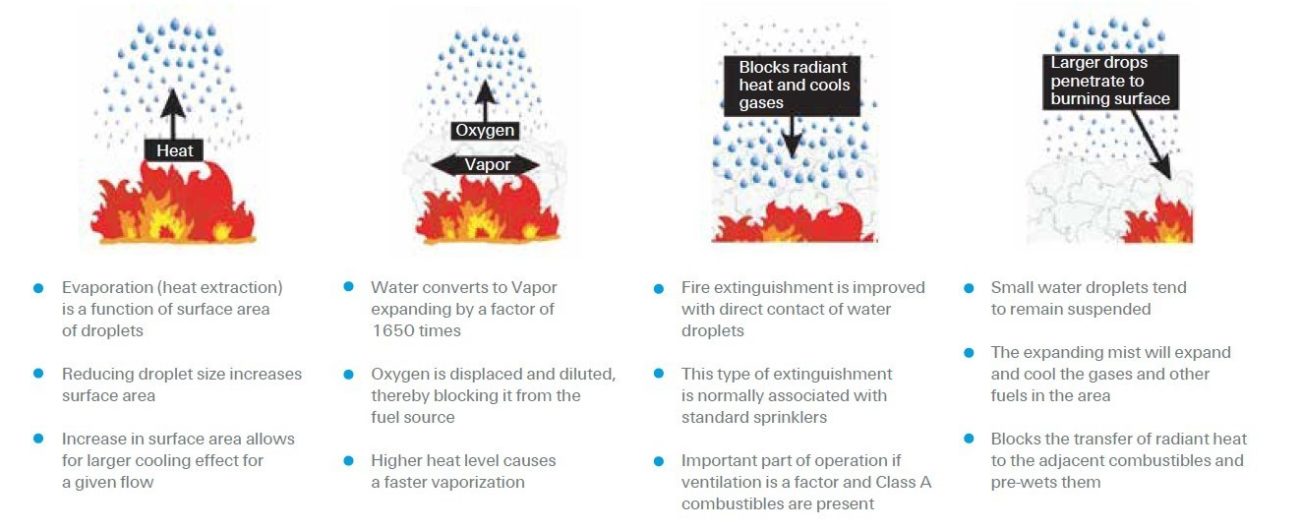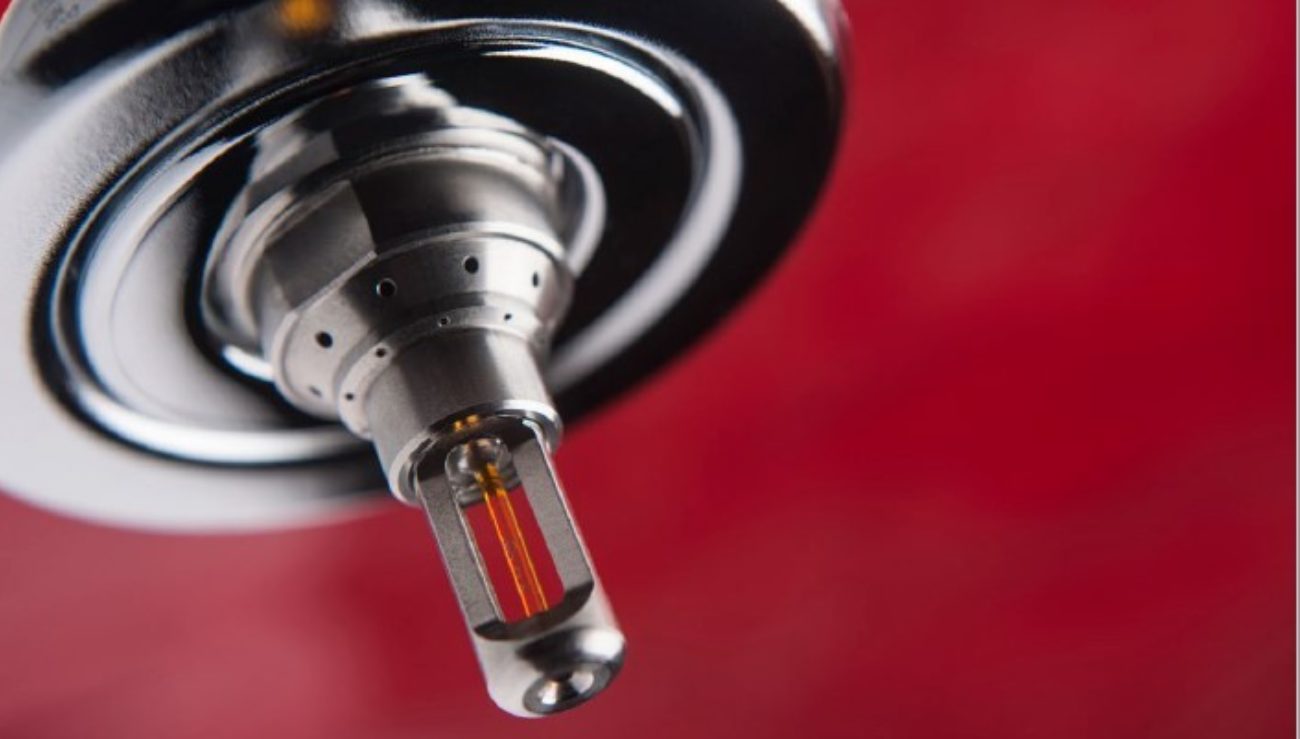Water mist systems control fire by reducing heat, displacing oxygen and controlling the fuel source by wetting and cooling the surrounding fuel surfaces.
The key to water mist technology lies in the design of the nozzle along with established pressure criteria to create a mist of small water droplets.
Water mist systems will have droplet sizes where 99% of the volumetric diameter is less than 1mm. Smaller droplets absorb heat at a faster rate than larger droplets due to the higher surface area-to-mass ratio.
A volume of water that consists of smaller droplets has a comparatively larger cumulative surface area than the same volume of water made up of larger droplets – such as those from a standard spray sprinkler. As a result, a rapid absorption of heat and evaporation of the smallest droplets will occur, causing temperatures to decrease while oxygen is displaced.

Due to this vaporisation, oxygen will be displaced in the area of the fire, disrupting the Fire Tetrahedron. Small water droplets tend to remain suspended in the air and fill the entire space.
The result being that any air the fire draws in becomes saturated with these droplets and vaporization occurs.
Water mist also helps to pre-wet and block the transfer of radiant heat to the adjacent combustibles, reducing the risk of fire to spread and grow.
There are three main categories of water mist systems:
Low pressure (175 psi or less)
Intermediate pressure (175 psi-500 psi)
High pressure (500 psi or greater).
Within these categories you may have single-fluid systems (water only) or twin-fluid systems (water and nitrogen).
All these system types are tested and approved for a variety of fire hazards and should be handled as an engineered water mist system, each requiring specific design and calculation criteria.
What Applications are best Suited to Water Mist
Water mist systems can be used as a complete solution for nearly every class of fire. Examples of where water mist systems have been used include, but are not limited to, archives, cable tunnels, data centres, heritage, hotels, industrial fryers, libraries, machinery spaces, offices and turbine enclosures.
Machinery spaces that utilise hydrocarbon fuels and lubricants, as well as flammable and combustible liquids under pressure, can create fast-growing spray and pool fires. This type of fire suppresses quickly when using an applicable water mist solution due to its rapid heat absorption.
Large, industrial fryers can also benefit from water mist technology. Food manufacturers using large industrial fryers can suffer significant loss with fires that cause widespread damage and product loss. Water mist nozzles can be installed directly within the hood system of the fryer to prevent fire from spreading.
Heritage sites, such as museums, libraries and art galleries contain high-value, irreplaceable assets. While fire poses a tremendous risk to the preservation of these assets, saturation from fire suppression systems can also cause significant damage. The lower water discharge of water mist systems helps reduce collateral damage to these assets without sacrificing fire protection capabilities.
To learn more about watermist fire suppression our Customer Care Team is available today on 01628 902107 for an immediate response.
You can also email [email protected] for a prompt reply
